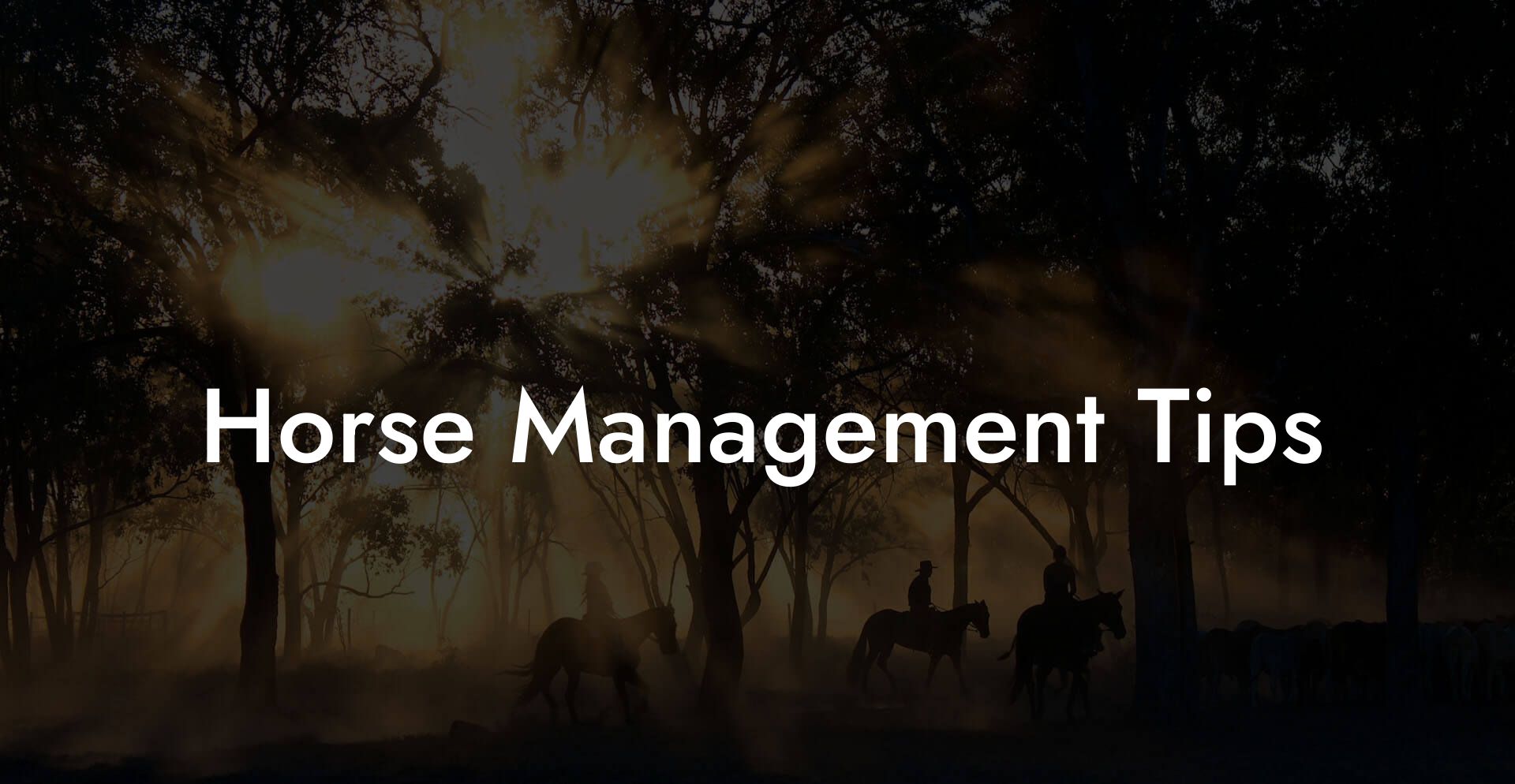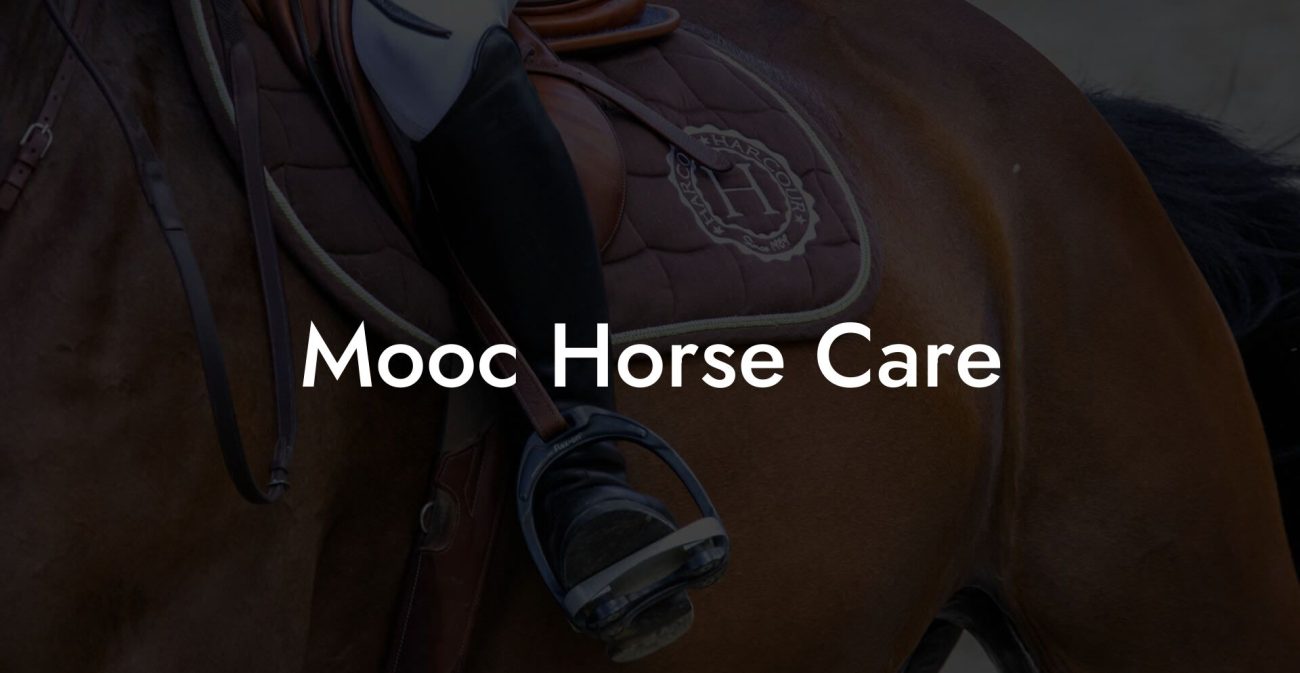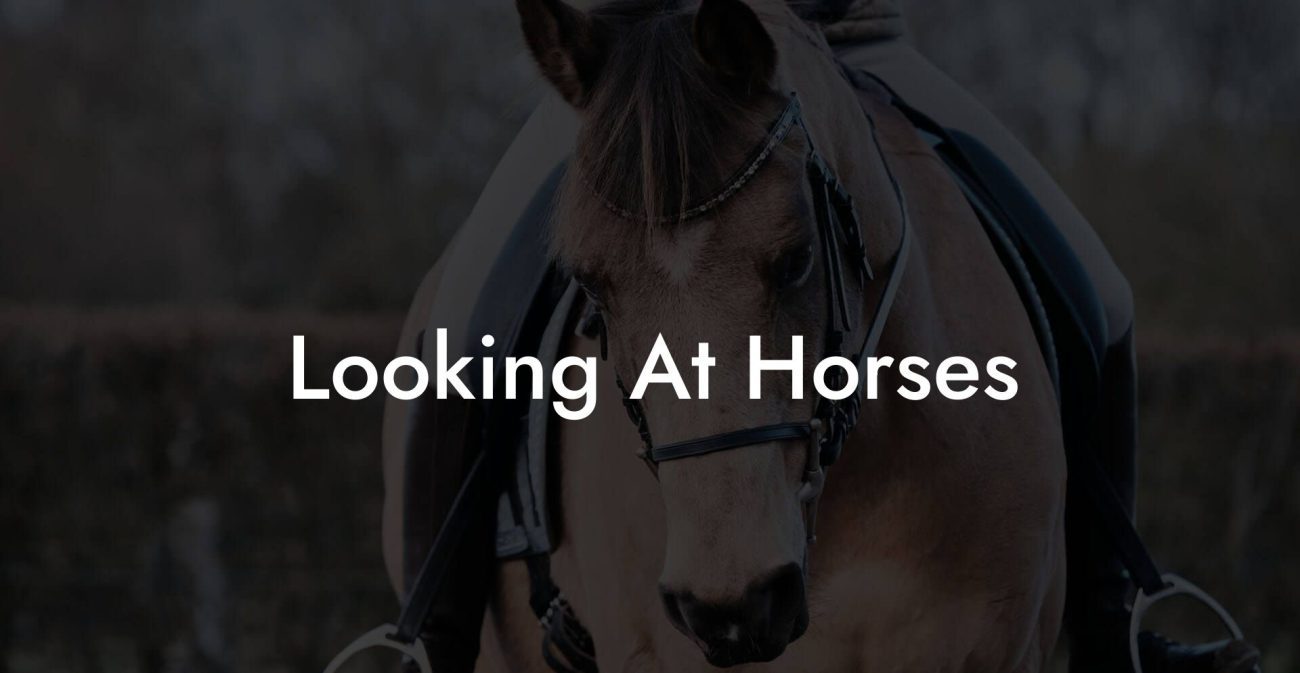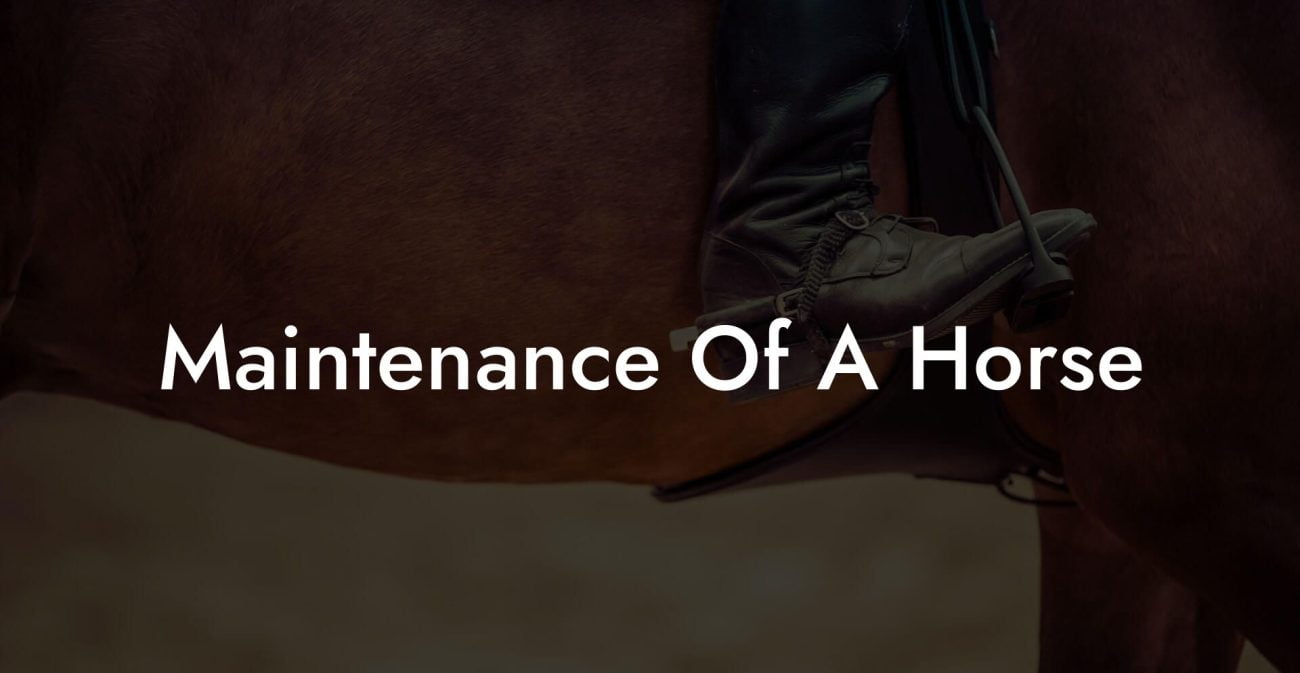Ready to level up your horse management game? Whether you’re rocking a slick Instagram equestrian aesthetic or simply trying to figure out how to keep your majestic friend happy and healthy, these horse management tips are here to blend old-school wisdom with modern, Gen-Z and millennial-approved flair. Get set for a deep dive into everything from feeding and stable maintenance to grooming, training, high-tech solutions, and even community support, all served with a side of humor and a down-to-earth vibe!
Quick Links to Useful Sections
- Understanding Equine Behavior and the Basics of Horse Management
- Feeding and Nutrition: Fueling Your Equine Marvel
- Stable Management and Maintenance: Creating a Sanctuary
- Grooming and Hygiene: Keep Their Shine and Spirit Intact
- Exercise and Workouts: Keep Your Horse Fit and Fab
- Training and Behavioral Management: Communication is Key
- Preventive Health Care and Medical Management: Riding the Safety Net
- Using Technology in Horse Care: Smart Solutions for Modern Equestrians
- Training equipment and Innovative Tools: Up Your Game
- Resources and Community Support: Your Next Steps
- Emergency Preparedness and Crisis Management: Be Ready for the Unexpected
- Integrating Horse Management Tips into Your Daily Routine
- Equine Social Life: Let’s Talk About the Herd Dynamic
- Horse Management Tips FAQ
- Empowering Your Equine Journey
Understanding Equine Behavior and the Basics of Horse Management
Managing a horse isn’t just about knowing how to dish out carrots and muck out a stall, it’s about understanding the intricate, regal nature of these creatures. Horses are social, sensitive, and intelligent beings with unique personalities that often mirror the quirky best friend you never knew you needed. Whether they’re a spirited thoroughbred or a laid-back quarter horse, each one communicates in its own distinct way.
At its core, effective horse management is all about establishing trust and creating an environment that supports both physical health and emotional well-being. With the booming popularity of social media, modern equestrians are sharing tips on everything from “mindful horse care” to sustainable stable management practices. Think of it as managing not just a pet, but a living, breathing partner who deserves the best of both tradition and modern tech.
In this expansive guide, we’ll break down key management areas:
equine nutrition, stable maintenance, grooming essentials, training routines, and the latest tech innovations in horse care. By integrating these elements, you’ll foster a connection with your horse that’s both scientifically informed and emotionally resonant.
Feeding and Nutrition: Fueling Your Equine Marvel
Let’s face it, feeding your horse is more than a mundane daily chore; you’re fueling a living engine. Just as you wouldn’t skip breakfast before a busy day, your horse needs a balanced diet to keep its energy levels high and its coat shiny. The keys to optimal equine nutrition include high-quality forage, balanced grains, and an array of vitamins and minerals that support digestive health and muscle repair.
Quality Forage: In the wild, horses graze on nutrient-rich grasses all day. In a stable setting, ensuring access to hay or pasture is crucial. Look for hay that is dust-free and green, and consider rotational grazing if you manage your own pasture.
Grains and Concentrates: While grains provide that quick energy boost, balance is critical. Overfeeding concentrates can lead to digestive issues. Modern horse management tips emphasize portion control and daily feeding schedules to mirror natural grazing patterns.
Supplements and Hydration: From biotin to vitamin E, supplements can support hoof health and muscle recovery. And don’t forget water, horses can easily get dehydrated, especially during hot weather. Think of hydration as the ultimate backstage pass to keeping your equine athlete in peak condition.
Modern nutrition plans often include innovative feeding systems that blend technology with tradition. Feeding apps, smart hay feeders, and even wearable sensors to monitor digestion are turning horse management into an engaging, high-tech experience that appeals to every millennial and Gen-Z equestrian enthusiast.
Stable Management and Maintenance: Creating a Sanctuary
A well-maintained stable isn’t just a shelter, it’s the ultimate sanctuary for your horse. Think of it as a custom-built smart home for your equine companion. From ventilation and bedding to regular cleaning routines, every detail counts in creating a comfortable space that promotes health and happiness.
Environmental Factors: Horses are sensitive to temperature, moisture, and even the layout of their living space. Ensuring proper ventilation, insulation, and drainage can prevent respiratory issues and keep dust levels to a minimum. With eco-friendly stable management practices on the rise, many modern horse enthusiasts are exploring sustainable building materials and energy-efficient designs.
Bedding and Cleanliness: Proper bedding isn’t just about comfort, it’s your first line of defense against infections and respiratory problems. Wood shavings, straw, or even advanced, washable synthetic bedding options help maintain a clean, dry environment. Consistent mucking and the use of non-toxic cleaning agents make a world of difference when it comes to long-term equine health.
Stable Organization: Use zoning to separate feeding, resting, and exercise areas. Organized stables reduce stress and prevent chaos during peak activity times. Modern solutions often include smart cameras and sensors that alert you when it’s time to clean, refill water buckets, or check the overall safety of your facility.
By integrating traditional practices with modern technology, you can transform your stable management routine into a streamlined, efficient, and sustainable system that applauds both your horse’s needs and your inner eco-warrior.
Grooming and Hygiene: Keep Their Shine and Spirit Intact
Grooming your horse is more than just a spa day, it’s a bonding ritual. A well-groomed horse is a happy horse, and keeping an eye on hygiene can prevent many common ailments. Beyond the practical benefits, grooming sessions are an excellent opportunity to check for injuries and build trust between you and your equine friend.
Essential Grooming Tools: Invest in quality brushes, mane combs, hoof picks, and shedding tools. Think of these as your horse’s personal skincare kit. Regular grooming removes dirt, prevents skin infections, and keeps that beautiful coat looking Instagram-ready.
Skin and Coat Care: Depending on the season, horses may need extra attention to their skin and coat. Deep conditioning, oil treatments, and medicated shampoos are all part of modern grooming trends. Groomers now share tips on social platforms, short how-to videos showing techniques that blend traditional methods with innovative products.
Hoof Health: Hoof care is an art in itself. Daily or bi-daily cleaning is essential. Regular farrier visits are a must to ensure proper trimming and shoeing. With new advancements in farrier technology, some owners are even exploring precision trimming guided by smart sensors.
Routine grooming does more than maintain physical cleanliness; it communicates care and attention that builds a profound, mutual trust between you and your horse. Plus, it’s a great excuse for a little “me-time” with your four-legged BFF.
Exercise and Workouts: Keep Your Horse Fit and Fab
Just as you crave that sweaty gym session or a refreshing run on the weekend, horses need a balanced exercise routine to thrive. Whether your horse is a competitive racer, a dressage enthusiast, or a trail riding buddy, well-planned exercise is essential for overall health. A blend of physical workouts and mental challenges keeps your horse engaged and stimulated.
Daily Exercise and Movement: Encourage natural movement by allowing your horse access to open fields for grazing and exercise. A daily turnout routine is key, as is incorporating structured workouts designed to match your horse’s age, breed, and health status.
Riding and Groundwork: Incorporating structured riding sessions, trail rides, and groundwork exercises into your routine helps maintain muscle tone, balance, and flexibility. Modern horse management tips emphasize hoof-to-heart connection, a concept that merges physical exercise with mindful interaction. This approach not only enhances performance but also deepens the bond between you and your equine companion.
Advanced Training Techniques: For those who want to push the envelope, consider integrating interval training, hill work, or even obstacle courses. These activities offer a fun twist on traditional workouts and can often be adapted to suit horses in different competitive categories, from jumping to eventing.
The bottom line? Regular, varied exercise not only keeps your horse physically fit, but it also contributes to cognitive sharpness and emotional balance, essential elements in modern equine management.
Training and Behavioral Management: Communication is Key
Training your horse is as much about communication as it is about discipline. Horses have been partners to humans for centuries, and successful training relies on mutual respect and clear signals. Gone are the days of old-school, whip-heavy methods, today’s approaches focus on positive reinforcement, patience, and consistency.
Positive Reinforcement: Reward-based systems work wonders. When your horse responds correctly, a treat, a few pats, or even a kind word goes a long way. Modern equestrians share that a little positivity makes a huge difference in the learning curve.
Establishing Routine: Consistency is crucial when training horses. Establish daily routines that include set times for exercise, grooming, and feeding, then stick to them religiously. This predictable schedule reduces stress and builds trust, making training sessions more productive.
Body Language and Signal Cues: Horses communicate largely through body language. Learn to read subtle cues, from ear positioning to tail swishing, to better understand your horse’s mood and intentions. Similarly, refining your own cues, whether through reins, voice commands, or touch, can significantly improve your training outcomes.
Dealing with Behavioral Challenges: Sometimes even the best-behaved horses have off days. Strategies such as clicker training, desensitization techniques, and, when needed, professional guidance can help manage stubborn or anxious behavior. Social media is rife with influencers sharing quick tips and video tutorials on how to overcome common training roadblocks, making advanced equine behavior management more accessible than ever.
Ultimately, effective training is a collaborative process that transforms daily routines into opportunities for growth, connection, and endless fun.
Preventive Health Care and Medical Management: Riding the Safety Net
Even the sturdiest horses need a rigorous health care routine to stay at the top of their game. Preventive health care is essential in catching issues before they escalate. From regular check-ups to vaccination schedules, a proactive approach is your best bet to avoid costly emergencies.
Routine Veterinary Care: Schedule annual or bi-annual wellness exams. These visits aren’t just about vaccinations, they’re opportunities to conduct dental checks, hoof evaluations, and overall health assessments. Technology now plays a part too; wearable devices monitor vital signs and activity levels to help spot any anomalies early on.
Vaccinations and Deworming: Maintaining up-to-date vaccination records and deworming schedules is non-negotiable. These measures protect against contagious diseases and parasites that can disrupt your horse’s performance and well-being.
Emergency Preparedness: Equip your stable with a well-stocked first-aid kit tailored for equines, and familiarize yourself with basic emergency procedures. Knowing how to handle minor injuries or sudden illnesses can be a lifesaver, literally. Many modern horse management enthusiasts even join local equine first-aid seminars and online communities to stay updated on the latest tips and tricks.
Mental and Emotional Health: While not often discussed, a horse’s mental health is just as important as its physical state. Regular socialization with other horses, gentle exercises, and even enrichment toys make a significant difference. A content horse is less prone to stress-induced illnesses and performs better in training and competitions.
With the integration of smart technology, preventive care is increasingly data-driven. Think of devices that track recovery after an injury or alert you when something seems off. This fusion of veterinary best practices with modern monitoring systems is revolutionizing horse care.
Using Technology in Horse Care: Smart Solutions for Modern Equestrians
If you thought smartphones only delivered memes and dance challenges, think again, technology is making significant strides in the world of equine management. From high-tech grooming tools to smart stable sensors, digital solutions are redefining how we care for horses.
Wearable Tech for Horses: Just as many of us track our steps and sleep at night, wearable devices for horses monitor heart rate, activity levels, and even temperature fluctuations. These insights empower you to make informed decisions about exercise routines and early detection of potential health issues.
Smart Stables: Automated systems can revolutionize stable management. Temperature sensors, automated feeding systems, and even AI-driven cameras help keep your horse safe and sound. This high-tech approach not only enhances daily operations but also aligns with sustainable practices by optimizing resource usage.
Apps and Online Communities: The digital age has given rise to communities where horse enthusiasts can swap tips, share success stories, and even access expert advice in real time. These platforms offer everything from training video tutorials to reviews on the latest equine products, a true digital watering hole for modern equestrians.
By integrating these smart solutions, you not only streamline horse management but also join a vibrant network of equine aficionados who are redefining how care meets innovation.
Training equipment and Innovative Tools: Up Your Game
Gone are the days when a simple halter and lead rope were all you needed. Today’s horse management toolkit is brimming with specialized equipment designed to enhance training, improve safety, and boost overall well-being. Whether it’s a new type of bit that ensures your horse’s comfort or a resistance band meant specifically for equine muscle conditioning, the market is overflowing with innovations.
Modern Tack: Look for ergonomic saddles and bridles that promise both style and comfort. Advances in materials mean tack that is lighter, stronger, and more uniquely tailored to individual horse anatomies. Many riders now invest in custom-fitted equipment that not only reduces the risk of injury but also elevates overall performance.
Training Aids: Consider integrating tools such as lunge lines, ground poles, and even interactive toys designed to stimulate mental agility. These aids not only pave the way for improved physical coordination but also make training sessions engaging and fun.
Fitness Equipment: Inspired by human fitness trends, specialized equipment like balance trainers and resistance boots are beginning to show up in stables. These innovations help in building muscle strength and coordination while preventing boredom and repetitive strain.
Whether you’re a casual rider or a competitive showjumper, the right equipment can turn a routine training session into a dynamic experience that fuses performance with play.
Resources and Community Support: Your Next Steps
Navigating the world of horse management can sometimes feel like riding through uncharted territory. Luckily, you’re not alone. A wealth of resources and vibrant communities are just a click away, online forums, social media groups, local clubs, and specialized apps all serve as reservoirs of knowledge and support.
Local Clubs and Associations: Join your local equestrian clubs or associations to exchange tips, participate in workshops, and attend events. These groups are treasure troves of hands-on experiences and provide an excellent opportunity to network.
Online Communities: Platforms like Facebook, Instagram, and specialized equine forums are buzzing with experts and enthusiasts sharing everything from DIY stable hacks to the latest in horse nutrition trends. These virtual communities keep you on top of emerging trends like sustainable stable management and holistic horse care.
Workshops and Webinars: Stay updated with the latest in horse management by attending online workshops and webinars. Many leading veterinarians, farriers, and trainers share their expertise through digital platforms, making it easier than ever to access professional advice no matter where you are.
Books and Blogs: Dive into a curated list of recommended reads and follow blogs that focus on everything from equine psychology and motivation to high-tech innovations in stable management. These resources are designed to provide both deep dives and quick reads for busy riders.
Local Vet Networks: Establish a relationship with a trusted veterinarian who regularly updates you on best practices, local regulations, and innovative treatments. Many modern practices now involve telemedicine consultations, making it convenient to discuss your horse’s well-being remotely.
By tapping into these resources, you’ll continually grow your know-how, stay ahead of industry trends, and join a passionate community dedicated to revolutionizing horse management. Your next steps are clear: learn, connect, and let your passion for horses shine brighter with every new tip!
Emergency Preparedness and Crisis Management: Be Ready for the Unexpected
In the unpredictable world of horse management, emergencies can crop up when you least expect them, whether it’s an unexpected bout of colic, an injury sustained during a spirited gallop, or even a natural disaster. A well-crafted crisis management plan is a non-negotiable part of your equine care toolkit.
Developing an Emergency Plan: It starts with a clear, accessible plan that includes contacts for emergency veterinary services, a checklist of supplies for first aid, and designated safe zones in and around your stable. Resources like emergency care templates and mobile apps can help streamline this process.
First-Aid Kits: Tailor your first-aid kit to the specific needs of your horse. Include items like bandages, antiseptics, cold packs, and other essentials recommended by veterinary professionals. A well-stocked kit is your first line of defense when every second counts.
Regular Drills: Just like fire drills in schools, conduct regular emergency drills so that everyone involved, riders, stable hands, and family members, is prepared. These practices not only save precious time in actual emergencies but also build confidence in managing unexpected situations.
Leveraging Technology: Modern equine management often uses apps that send alerts, track symptoms, or even provide live guidance during emergencies. The fusion of digital tools with traditional first-aid knowledge creates a safety net that can dramatically improve outcomes when time is of the essence.
With a proactive emergency preparedness plan, you’re not only safeguarding your horse, but also empowering yourself to handle crises with a calm, focused approach that reflects the best of both tradition and innovation.
Integrating Horse Management Tips into Your Daily Routine
When it comes to mastering horse management, consistency is your best friend. Merging smart management practices, state-of-the-art technology, and an understanding of your horse’s unique personality can transform daily routines into dynamic rituals of care.
Morning Routines: Kick off your day with a quick health check, observe your horse’s behavior, inspect the stable, and ensure that hydration and feed are all set. A positive start to the day gets both you and your horse in the right headspace.
Midday Check-ins: Incorporate a short grooming session or a relaxed turnout. This not only reinforces your bond but also provides critical insight into any developing issues. A few minutes of mindful interaction can also be a stress reliever for both parties.
Evening Wind-Downs: Wrap up the day with a review of your horse’s performance and health, take notes, update your digital logs, or share feedback on your favorite equestrian apps. This reflection not only tracks progress but also prepares you to adjust tomorrow’s plans if needed.
Integrating these tips into your daily routine ensures that managing your horse isn’t a sporadic effort, but a harmonious, ongoing process that adapts to both challenge and change.
Equine Social Life: Let’s Talk About the Herd Dynamic
Horses are social animals that thrive on interaction, and managing that dynamic is part of effective horse care. Just as you might feel more empowered when connected with your community, your horse’s social well-being plays a crucial role in its overall health.
Introducing New Equine Friends: Whether you’re expanding your herd or finding that one new buddy for your solitary stallion, supervise introductions to ensure smooth social dynamics. Group turnout sessions can be a great way to facilitate these interactions and spot any brewing conflicts early.
Managing Hierarchies: Every herd has its pecking order, er, hoofing order. Recognize the natural hierarchy in your stable, and adjust management strategies accordingly. A harmonious group often translates to reduced stress and fewer behavioral issues.
Interactive Enrichment: Offer toys, obstacles, or even scent-based enrichment to keep herd dynamics lively and counter boredom. Social enrichment not only keeps your horses mentally stimulated but also helps them develop vital social skills.
Engaging with the herd is a subtle yet powerful aspect of comprehensive horse management. It ensures that the social needs of your equine companions are met, contributing to their happiness and performance.
Horse Management Tips FAQ
Below are some frequently asked questions that cut through the jargon and provide crisp answers to common horse management conundrums:
1. What are the basic principles of effective horse management?
Effective horse management hinges on understanding equine behavior, ensuring proper nutrition, maintaining clean and safe stables, and combining regular exercise with positive training routines. It’s about building trust and meeting both physical and emotional needs.
2. How do I design a balanced feeding plan for my horse?
A balanced feeding plan includes quality forage, controlled grains and concentrates, appropriate supplements, and constant access to clean water. Consult with an equine nutritionist and consider your horse’s age, activity level, and health needs.
3. What are some modern stable management techniques I should consider?
Consider integrating automated ventilation, sustainable bedding, smart sensors for environmental control, and digital checklists into your stable routine. These innovations help keep the environment healthy and hazard-free.
4. How can technology improve horse care?
From wearable tech that tracks vital signs to smart stable systems and dedicated equestrian apps, technology helps monitor your horse’s health, enhance training sessions, and even streamline emergency preparedness.
5. How do I handle behavioral issues through training?
Use positive reinforcement, consistent routines, and clear body language cues to manage behavior. Training should focus on building trust and gradually introducing new challenges to keep your horse mentally and physically engaged.
6. Why is preventive healthcare so important in horse management?
Preventive healthcare, regular veterinary checkups, vaccinations, deworming, and first-aid preparedness, is critical for detecting issues early and ensuring your horse maintains peak performance over time.
7. Can joining a community help improve horse management practices?
Absolutely. Engaging with local clubs, online forums, and social media groups provides access to a wealth of knowledge, personal experiences, and the latest trends in horse management. It’s a great way to learn new tips and share challenges with peers.
8. What are some key grooming tips for maintaining a healthy coat?
Regular brushing, proper hoof care, periodic deep cleaning, and using quality grooming products are essential for maintaining a shiny, healthy coat. Grooming also offers a chance to spot injuries or skin issues early.
9. How can I effectively integrate exercise into my horse’s daily routine?
A mix of turnout time, structured training, groundwork, and sport-specific exercises helps build muscle tone, ensure proper movement, and prevent boredom. Tailor your routine to your horse’s needs and schedule regular check-ins.
10. What steps should I take during a horse-related emergency?
Have a clear emergency plan in place, including a stocked first-aid kit, designated safe zones, and contact information for veterinary help. Practice emergency drills and leverage technology for real-time health monitoring.
Empowering Your Equine Journey
Embracing these horse management tips means celebrating every stride, every neigh, and every shared moment of joy with your equine companion. It’s more than just routines or checklists, it’s a lifestyle that fuses practical care with a forward-thinking, high-energy approach. Every brush stroke, every smart gadget, and every training session contributes to a holistic vision of health and connectivity.
Just as the most iconic equestrians of our generation have shown, managing your horse effectively isn’t about perfection; it’s about passion, persistence, and the willingness to adapt to ever-evolving best practices. By merging time-tested principles with innovative technology and modern community support, you’re not only caring for your horse, you’re forging a lasting bond that resonates with the spirit of the 21st century.
So, saddle up for a journey that’s equal parts practical and pioneering. Dive into these tips, experiment with new approaches, and share your success with a community that’s as enthusiastic as you are. Your horse isn’t just an animal, it’s a partner in a bold, shared adventure. Here’s to nurturing that unique spark, one informed, empowered decision at a time!
The future of horse management is here, and it’s dynamic, innovative, and undeniably exciting. Ready to take the reins and redefine what it means to care for a horse? Your journey to a smarter, happier, and more connected approach starts now.













